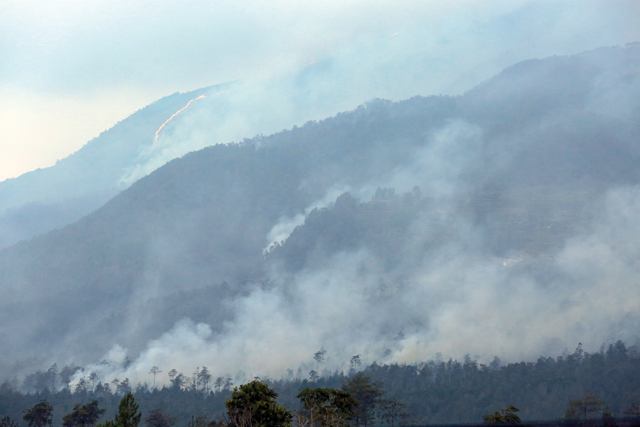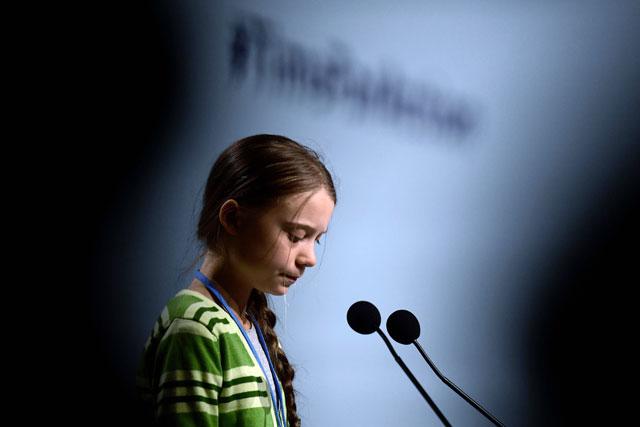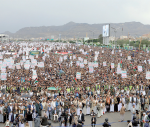You are here
Ten key moments in the climate change fight
By AFP - Oct 29,2023 - Last updated at Oct 29,2023

This photo taken on Saturday shows smoke from wildfires on mount Merbabu as seen from Batur village in Semarang, Central Java, amid a prolonged dry season triggered by the El Nino climate phenomenon (AFP photo)
PARIS — Ahead of UN climate talks in Dubai from November 30, here are 10 key dates in the battle against global warming.
1988 — Alarm bells
Alerted by scientists to signs that the Earth’s surface was warming, in 1988 the United Nations established the Intergovernmental Panel on Climate Change (IPCC) to investigate.
Two years later, the panel reported that heat-trapping “greenhouse” gases generated by human activity were on the rise and could intensify planetary warming.
In a series of studies, evidence accumulated that human activities — voracious burning of coal, oil and gas; rainforest logging; and destructive farming practices — were heating the Earth’s surface, a prelude to disruptions of its climate system.
1992 — Earth Summit
An “Earth Summit” in Rio de Janeiro in 1992 created the UN Framework Convention on Climate Change, with the aim of reducing greenhouse-gas emissions.
Since 1995, so called “Conferences of the Parties”, or COPs, have been meeting to pursue that elusive goal.
1997 — Kyoto Protocol
In 1997, nations agreed in Kyoto, Japan, on a 2008-2012 timeframe for industrialised nations to reduce greenhouse-gas emissions by an average of 5.2 per cent from 1990 levels.
Developing countries, including China, India and Brazil, were not required to take on binding targets.
But in 2001, the United States, at the time the world’s biggest carbon emitter, refused to ratify the protocol, which took effect in 2005.
2007 — Nobel prize
The IPCC reported in 2007 that evidence of global warming was now “unequivocal” and that extreme weather events would probably multiply.
In October 2007, the UN panel shared the Nobel Peace Prize with former US vice president Al Gore for their efforts in raising the alarm about climate change.
2009 — Copenhagen collapse
Participants at the COP15 gathering in Copenhagen failed to achieve an agreement for the post-2012 period.
Several dozen major emitters, including China and the United States, announced a goal of limiting global temperature increases to 2ºC above pre-industrial levels but were vague on how the goal was to be reached.
2015: Breakthrough in Paris
In December 2015, nearly every nation on Earth committed to limit warming to “well below” 2ºC above pre-industrial levels.
A more ambitious cap of 1.5ºC is also adopted as the preferred target.
2018 — Greta Thunberg
In 2018, Swedish teen Greta Thunberg started skipping school on Fridays to sit outside the Swedish parliament, demanding more substantive action to combat climate change.
Despite ending her Friday protests in 2023 after graduating, her protest inspired students worldwide to skip class each Friday in a bid for more efforts from global leaders.
2022 — Record emissions
In 2022, the International Energy Agency reported that global CO2 emissions would hit an annual record.
But at a COP27 meeting that year in Sharm El Sheikh, Egypt, participants failed to agree on more ambitious emissions cuts.
2022 — Biodiversity deal
An accord on biodiversity is reached in Montreal in December 2022, calling for the designation of 30 per cent of the planet’s land and oceans as protected zones by 2030, and an end of extinctions of threatened species due to human activities.
2023 — New warning
The United Nations warned that despite efforts so far, the world would see its first full year at 1.5ºC above pre-industrial levels in the early 2030s.
According to the European Union’s climate observatory Copernicus, global temperatures in the summer of 2023 were the hottest ever registered.
Related Articles
PARIS — Schoolchildren skipping class to strike, protests bringing city centres to a standstill: Armed with dire warnings from scientists, p
PARIS — Renewed promises to slash greenhouse gas emissions from countries as part of the Paris climate deal are “very far” from what is requ
PARIS — International climate pledges remain far off track to limit temperature rises to 1.5ºC, according to a UN report released on Wednesd

















